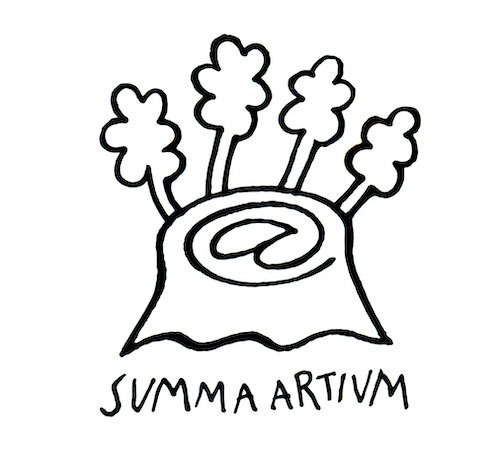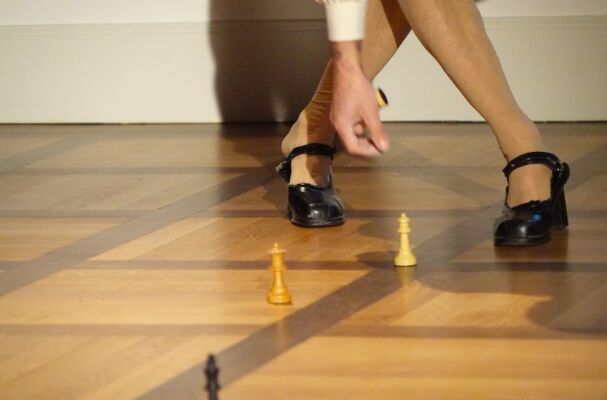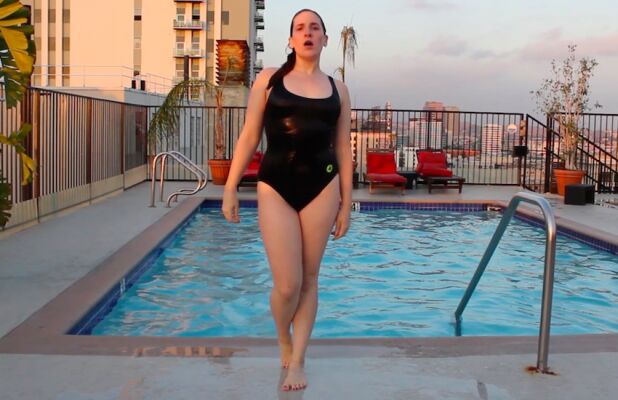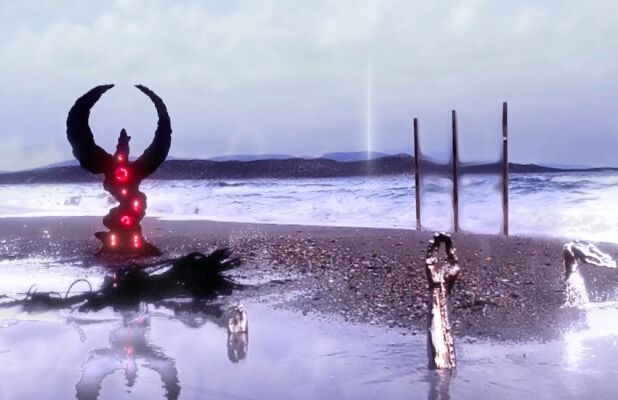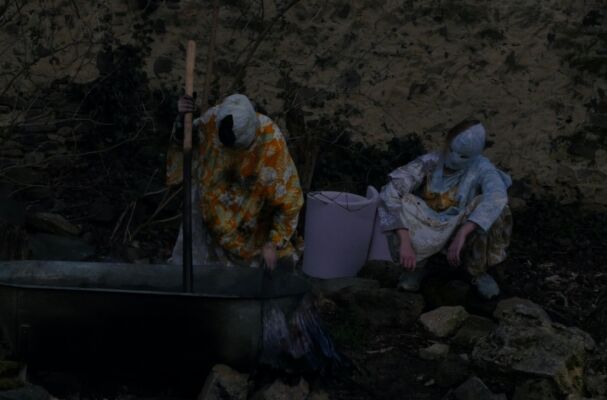Gold und Liebe IV. – Plague
A conversation on Plague with Arthur Golyakov
Plague is a curatorial group founded in Krasnodar, Russia in 2018. It was created by three young artists, Arthur Golyakov, Stas Lobachevskiy, and Vanya Venmer. In their curatorial and artistic practice, they discover such issues as post-graffiti aesthetics, occult roots of capitalism, non-human and object-oriented agenda, and other newest artistic topics.
Arthur Golyakov (1991, Svalyava, Ukraine) is an artist, curator and co-founder of the curatorial platform Plague and 2.27.7 club. Lives and works in Krasnodar and Kazan, Russia. He graduated from the Kuban State University, Faculty of Art and Graphic, Krasnodar. Works with various mediums. In his practice, he studies the issues of subjectness, everyday and religious mysticism.

Ráhel Anna Molnár: What Plague, as a notion and phenomena meant for you in 2018 and what does it mean today?
Arthur Golyakov: Plague turned out to be the word that could well describe our strategy and goals. We use the virus as a metaphor for the ability to move in different directions and mutate. In the beginning, we did not think of any negative connotations to which our name might refer.
What is collectivity and how it shaped you in the past two years?
I think we can talk about two kinds of collectivity. The members of our group and the people who help us are one hand. On the other hand, it is the new acquaintances and connections that emerge in the process of working outside our team. We try to stay in touch with people with whom we have worked on projects together and keep involving them.
The close members of your group are all based in Krasnodar, Russia. Could you tell me about this physical locality, the city in the specific Russian context and the general atmosphere of the artistic scene?
If we talk about the atmosphere in general, it's rather favorable. In recent years Krasnodar, like many big cities in Russia, has seen the emergence of its own local contemporary art centers and various self-organized initiatives. But personally, I have a feeling that this is more about some well-established and understandable art practices. We wanted to develop in a different direction, which prompted us to create Plague. Another very important fact is that in Krasnodar we have many friends and acquaintances from completely different spheres of activity, who help and support us.
Last year was tough for many, and we could see that most not only self-organised initiatives but also large institutions faced the problem of existing in a new regime and not being able to go online without significant losses. For this reason, I think that if we are talking about Russia, it is worth mentioning projects close to our vector, such as TZVETNIK, Issmag Gallery or Money Gallery. There are also new names and projects on the horizon, but right now it's hard for me to say anything specific about them.


You work in a quiet broad international scope. This summer you organised an online collaboration – Garden of Death (G.O.D.) – that involved eight artist-run initiatives, all of whom work in off-site contexts and inhabit the digital space. On what basis do you organize these collaborations? Is it a conscious act towards some sort of virtual network?
We started to work on G.O.D. in late 2019 and we originally planned it as a series of exhibitions in different cities with free access for viewers. In some cities, there were more restrictions than in others, so it was important that artists and curators could work on their part of the project without additional problems. Even under normal circumstances, it would have been difficult to visit all the venues, as we planned eight shows with a presentation every second day.
Of course, it's cool when you have the opportunity to attract a large number of viewers to a physical space, but if you are doing everything yourself and you are limited in resources and budget, you have to think about other strategies. The internet allows us to reach a wider audience and we can't ignore that. In my view, in 2020, the question of contrasting online and offline is over, it’s clear how the digital world affects our lives. It has become obvious that the digital space is part of everyday reality. We, like many of the artists and collectives we collaborate with, understood this even before lockdown. Choosing between the 'real' and the digital seems at the very least strange to me.
Of course, boundaries are totally blurring between the physical and the digital. It’s obviously not a question of choosing one over the other, still, I would say there are certain aesthetical trends that are more tied to the digital space. Plague – as many of your collaborators (MRZB, Hyperlink Athens, etc.) – also has a specific aesthetical stance that I can mostly link to hauntology, post-apocalyptic landscapes, and occult sci-fi rituals. Can you tell me your relation to these categories?
There are definitely aesthetic tendencies here, as you called it. They play an essential role as a way for the viewer to enter into this kind of artistic practice. It allows the eye to turn its attention to the object of art, to isolate it from the big visual flow. It is important to understand that everything is not limited only to the aesthetic side and to aesthetics in its classical sense. I define it for myself as a "return of the visual" – but a return to something else than the previous one. In hauntology, with post-apocalyptic landscapes and occult fantasy rituals, I see something in common in the form of an "unease" or distrust of the subject towards the rational. I feel it is close to the expression of an inability to solve the problems that we inherited from our civilization. Therefore, what we do naturally, quite often refers to the post-apocalypse. To a desire to start all over again.
You mentioned mutation a structural element in the work of your collective. You’ve just opened a physical gallery, Plague Space with your first exhibition, Happy New Year. Could you tell me about that and your future program?
We have positioned ourselves as a curatorial collective, but we also want to develop in some other directions and formats. For example, we are thinking about starting a project based on Garden of Death, like a festival. The opening of our space is a big moment and also a new direction for us. We wanted to do it in Krasnodar, to start influencing the local environment from within. Despite the fact that there is a lot of new artistic expression on the internet, many people find it very confusing and, more often than not, may not even know it exists. That's why we are primarily planning to do exhibitions of artists from different countries who are working alongside us.

This article was created with the support of Summa Artium.
